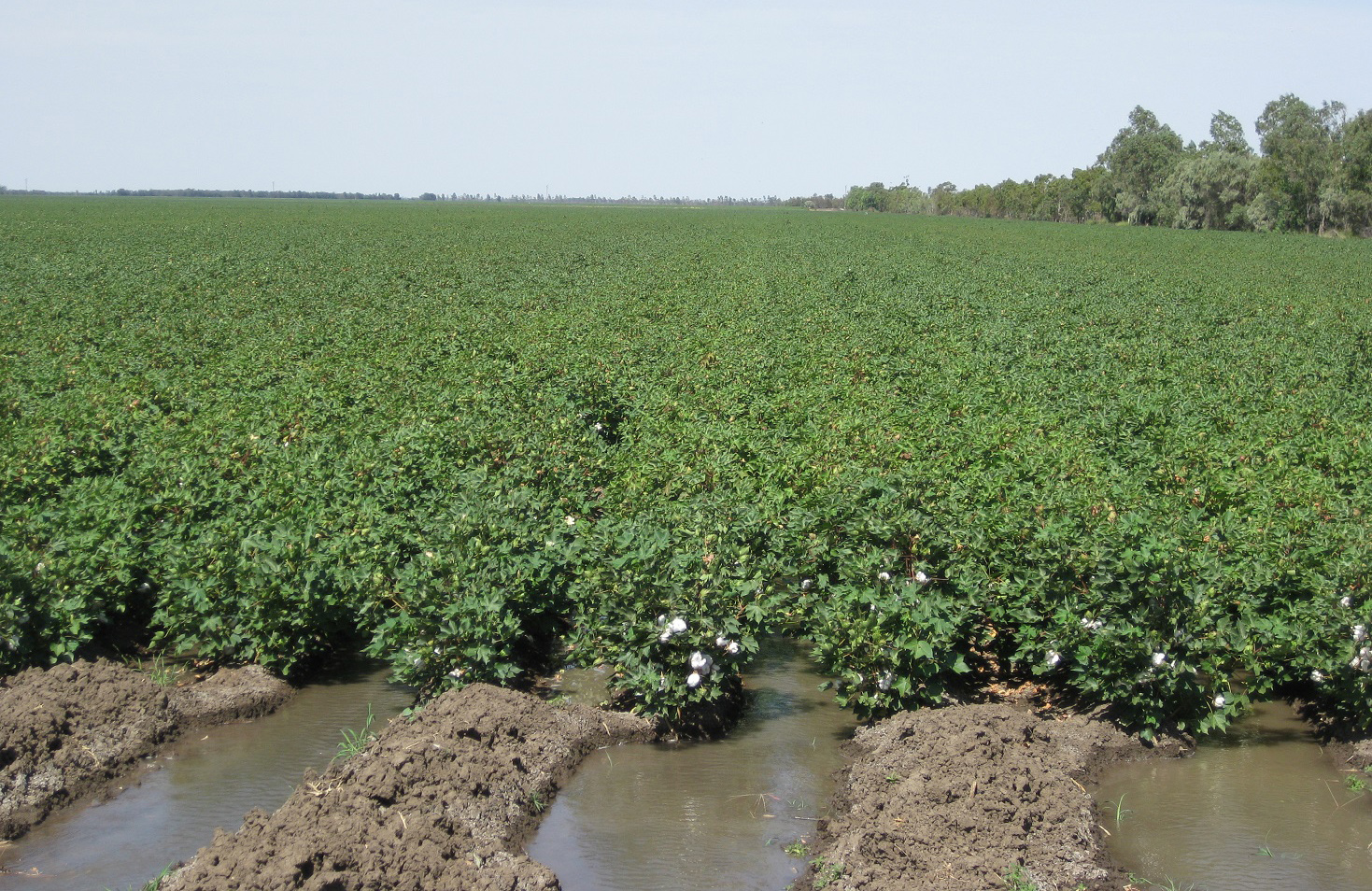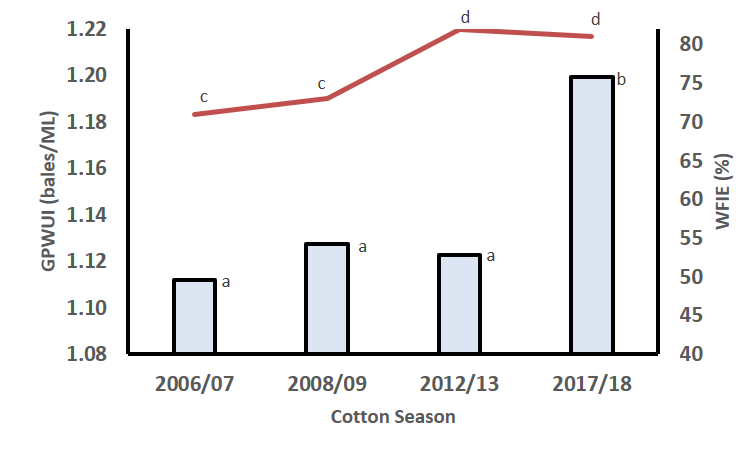
Improved water productivity in the cotton industry
30 Apr 2020

Recent benchmarking studies by NSW Department of Primary Industries (DPI) show a continual improvement in water productivity in the Australian cotton industry.
As part of a national collaborative project with the Cotton Research & Development Corporation (CRDC), NSW DPI’s Soil and Water R&D team has completed a study on the improvements in water productivity in the cotton industry over recent decades.
Extensive records on all water accessed by growers from rivers and bores, plus water received through rainfall and kept as stored soil moisture in fields and in farm storage dams were collected on each farm. In 2017-18, the research team conducted comprehensive surveys of 57 farms, spread across all major cotton-growing areas, including the Lachlan and Macquarie Valleys, covering more than 200 cotton fields and around 18,670 hectares of irrigated cotton.
NSW DPI Irrigation Research Officer and project leader Dr David Perovic said the study reveals that the cotton growers have steadily improved water productivity in bales per megalitre of water from 1.12 in 2006-07 to 1.20 in 2017-18.
“This increase in water productivity is significant and shows water available to farming is being used efficiently,” said Dr Perovic.
NSW DPI Irrigation Research and Development Officer, Dr Jasim Uddin, based at Trangie Agricultural Research Centre has been liaising with cotton growers in the Lachlan and Macquarie Valleys to gather and analyse bench-marking data on water use and production.
Dr Uddin said we will be continuing this research project over coming years and are assessing both the change in water productivity and what is driving that change.
“The trend indicates that irrigation water used per bale (227 kg of cotton lint) has reduced to 0.5 ML in 2017-18, down from 0.8 ML in 2006-07, Dr Uddin said.
“In addition to improved management within the crop, less water to produce cotton is the result of improved irrigation efficiency across the whole farm, mostly by reducing evaporation and seepage during storage and transmission.
Figure 1. Comparison of the Gross Product Water Use Index (GWPUI), blue columns, and Whole Farm Irrigation Efficiency (WFIE), red line, over previous Water Productivity Benchmarking surveys. Different letters represent significant differences in analysis of variance (Source: Perović et al. 2019).

The benchmarking team has also developed more efficient techniques to monitor cotton water productivity annually to support the industry ensuring sustainable use of water resources.
Local farmers who would like to get involved in the research on cotton water productivity benchmarking are encouraged to contact Dr Uddin on 0448 180 996 or email jasim.uddin@dpi.nsw.gov.au
Media contact: Anne Brook 0477 358 305

